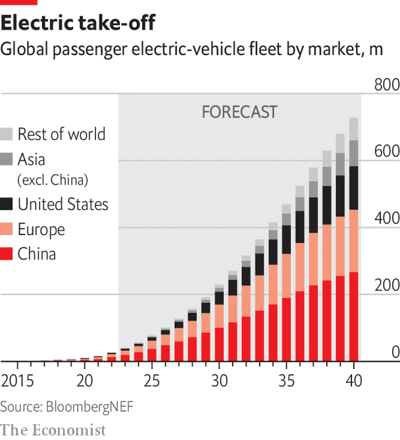I get you. Thinking this through, the only way to make the global ocean more saline is to remove water. That’s in a time where frozen locked up water is melting into the ocean.
I think we’re fine.
I get you. Thinking this through, the only way to make the global ocean more saline is to remove water. That’s in a time where frozen locked up water is melting into the ocean.
I think we’re fine.
Yeah, I’m not too worried about hydrogen electrolysis driving salinity. For one thing, the hydrogen energy cycle is a closed loop. Electrolysis turns water into hydrogen and oxygen, then combustion turns hydrogen and oxygen back into water vapor, which will inevitably turn into rain and end up back in the sea. So in the long run, the total salinity shouldn’t change (though as @Benny40 points out, you’d have to be careful about localised hyper salinity around your discharge outlets). You could even run completely closed-circuit systems, capturing and condensing the water vapour from your combustion to split again via electrolysis, and so on around and around again. There might even be advantages to this approach, because you could be pretty sure the water you were using was pure and you wouldn’t have to deal with contaminants or salt residue etc.
We used to sell Browns Gas generators and it works very well as a fuel gas. You need high purity water or you screw up the hydrolysis unit, and it consumes more electrical energy than it produces, but the units do work well and for a variety of uses.
Dum de dum, nothing to see here, I’m sure we can happily continue to run a thermal coal and gas export industry for the next 50 years and nothing bad will happen, right?
Eeeek…
Awesome can go in the water without a wetsuit in winter! Or at least that will be the sceptics line I presume.
Below isn’t a proven link, but current climate modeling predicts I think a 1 degree increase in temperature being disguised by smog. The reduction in maritime smog matching a stark increase in temperature does fit with that.
El Nino is going to be brutal.
There has been a winter drought in France and in the east Pyrenees (where there have been bushfires).
How hot is that hypersaline water getting pumped back.
So I don’t need to start ordering extra salt when I get hot chips?
people have forgotten what 2019 was like
Hard to believe we jumped straight out of that hazy hellscape straight into a pandemic.
Some of the pilot projects currently running for hydrogen blending into a community network are developed in conjunction with a wastewater treatment plant. Look up hydrogen park Murray valley.
Did you watch the Future Fuels CRC presentation on appliance testing with hydrogen blends and at 100%?
Adelaide uni have done a power of work to date. If you can get your hands on it I recommend checking it out.
I haven’t, but I’ll check that out. It’s really interesting. I’m expecting a bunch of hydrogen appliance stuff to be publicised later in the year.
The challenge is that hydrogen needs an electric gas detector for safety. This isn’t in natural gas appliances, so shifting a house from CH4 to H2 requires an equipment change. Doing that for all users in a suburb would be a challenge, but similar has been done for the shift from town gas to natural gas in the 90s.
Don’t forget that towns gas was something like 50% hydrogen.
Hydrogen does dissipate quite quickly, so the explosion risk may not be as bad as thought.
One major functional issue that the Adelaide uni identified is that the radiation heat transfer is lower with ![]() hydrogen
hydrogen
In any case, it now seems to be trendy to bash hydrogen and electrification is the cool kid in town. Never mind the fact that all electric appliances will be running on 60% coal fired power for the foreseeable future.
AND we’ll still extract gas the and just send it elsewhere, all the while killing off another manufacturing sector (gas appliances).
I feel like I’ve gone full RWNJ on all this ![]()
EVs are coming…

China is demanding that 20% of cars must be nevs (electric or new energy) by 2025, with a full switch away from cars with only an ice (internal combustion) by 2035
Even in America, the land of the petrolhead, Joe Biden unveiled on April 12th proposals for strict limits on vehicle emissions, the toughest of which would require around two-thirds of car sales to be battery-powered by 2032.
The goal of Stellantis … formed by a merger in 2021 of Fiat Chrysler and psa Group, owner of Citroën and Peugeot, is for all new cars in Europe and half its American output to be evs by 2030.
Volkswagen says its namesake brand will be ev only by 2033 in Europe and that Audi, an upmarket sibling, will go fully electric worldwide by the same year.
We’ve got many many many billions of $$$ of infrastructure in the ground for gas. There’s a potential easy win there to reuse the gas infrastructure for hydrogen. The alternative is to build replacement electrical transmission capacity to retire the gas pipes.
Another advantage of gas pipes is you can load it up with gas when demand is low. It becomes a storage tank that you can draw down on during peak loads.